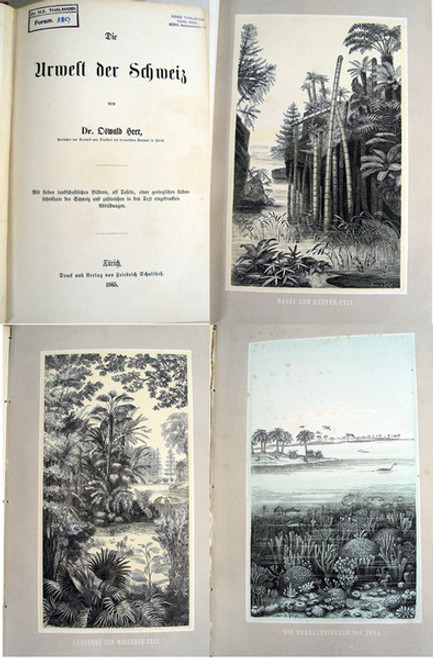Koppen, Wladimir P. & Alfred Wegener; Die Klimate der Geologischen Vorzeit. Berlin, Borntraeger, 1924. Quarto, pp. iv, 255, folded table, 41 maps and diagrams.
The work is complete and in the original (?) or contemporary cloth over boards with gilt titles. The binding is tight and clean. Canceled German geology library stamp on title page and lower margin of two text pages. With the exception of the small stamps, the text is clean and bright. In very good condition.
Wladimir Koppen (1846-1940) was a Russian-German geographer, climatologist, meteorologist and botanist. After completing his studies in St. Petersburg, Koppen spent most of his life in Germany and Austria. He made major contributions to climatology and meteorology and in collaboration with his son-in-law Alfred Wegener was a major figure in the founding of paleoclimatology. Alfred Wegener (1880-1930) is considered the founder of continental drift which is now known as plate tectonics. In 1924 Koppen and Wegener published the study “Die Klimate der Geologischen Vorzeit” (The climates of the geological past).
Within the work, Koppen and Wegener discuss various climatic indicators including glacial features, coal deposits, gypsum, salt deposits, desert sandstones, löss, soil types and colors, fossil flora and fauna and coral reefs. These features are used as indicators and were plotted on the present-day continents for different geologic time intervals. Earlier in his career Koppen had developed the concept of modern global climate zones. With minor changes these zones are still used today. The authors used these climate zones and their indicators to plot fossil climate indicators for paleogeographic reconstructions for most of the Phanerozoic periods and showed climate changes in Earth history. The work is now regarded as the foundation of the geologic discipline of paleoclimatology.

















